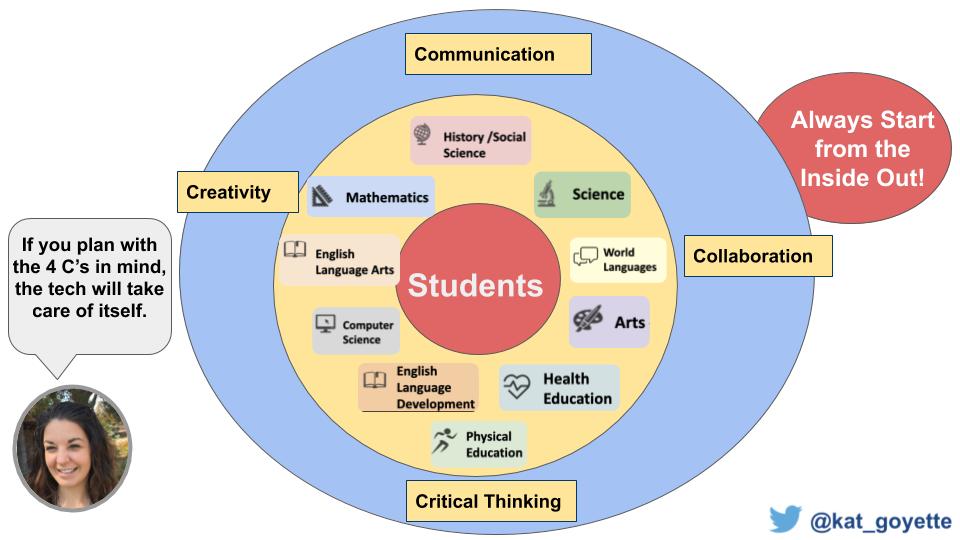
Educators, particularly at the elementary level, often post a daily schedule on the board for their students to see. For each assigned time, an academic content area or task is often listed (Mathematics, Reading, Writing, Science, Social Studies, Physical Education, Art). “Technology” should not be listed next to a time frame. Educational technology is not a content area in an of itself, it is a means of accelerating learning of academic goals. Rather than “students learn to create presentations using Google slides or Powerpoint” during so-called technology time, we must flip the verbiage and focus. Our goal needs to be focused on academics first and tech second. For example, “students demonstrate understanding of figurative language in a text by creating a multimedia presentation”. We lead with learning, never with tech.
“How” vs. “What
I was working with educators of primary grade students this week, who were looking for ways to ensure that technology use by their learners would be purposeful and aligned to academic content standards. They appreciated our focus on beginning with an academic learning goal, and only then determining what technology tools may support achievement of that goal. A phrase I said resonated with these educators. Content is the “what”, technology is the “how”. I have piloted the graphic below with a few educators, who have remarked that it helps them prepare lessons that integrate technology for a purpose. You may notice that students are at the center. We must never forget that if we fail to build relationships with our learners, we are unable to meet their where they are at and connect our content to their lives.

Technology is not listed anywhere on the graphic.
(Computer science is not synonymous with educational technology, which is why it is listed as a separate content area in the yellow portion of the graphic.) In planning with educators, I have found that when you plan to engage students in the “how” by considering ways learners will communicate, demonstrate creativity, collaborate, and think critically, technology integration occurs naturally.
4 C’s Ideation

As we ideated regarding a sample lesson that would integrate technology, we first began with a learning goal. We determined that students would focus on a reading comprehension standard, to identify problem and solution in a text. I then drew a grid, with each quadrant representing one of the 4 C’s (communication, collaboration, creativity, critical thinking), a strategy I learned from Adam Juarez. I asked these educators how students could collaborate during the learning experience focused on problem and solution in a text.
Build Upon Non-Tech Strategies
At first, educators were reluctant to provide answers. As this was an educational technology workshop, they believed the expectation was to begin listing tech tools and apps. I encouraged them to let me know what great non-tech strategies they were already using. In example, an educator indicated she has students communicate by speaking with a classmate about their learning. “Great!” I said, “It is always important to have students listen and speak with one another.” At this point, I was able to ask these educators if they were familiar with the app Flipgrid, a platform that fosters verbal discussions via brief video recordings. As opposed to messaging the value of video discussions for “technology time”, the strategy now aligned to an academic purpose and non-tech strategy suggested by the educators themselves.
Integration > Stand-Alone
The term “educational technology” contains the term education first, and technology second. The “what” of our education must precede the “how”. We begin with “who”, our students. Keep everything in perspective when planning for your learners, designing experiences based first on who, then the what, and finally how.
